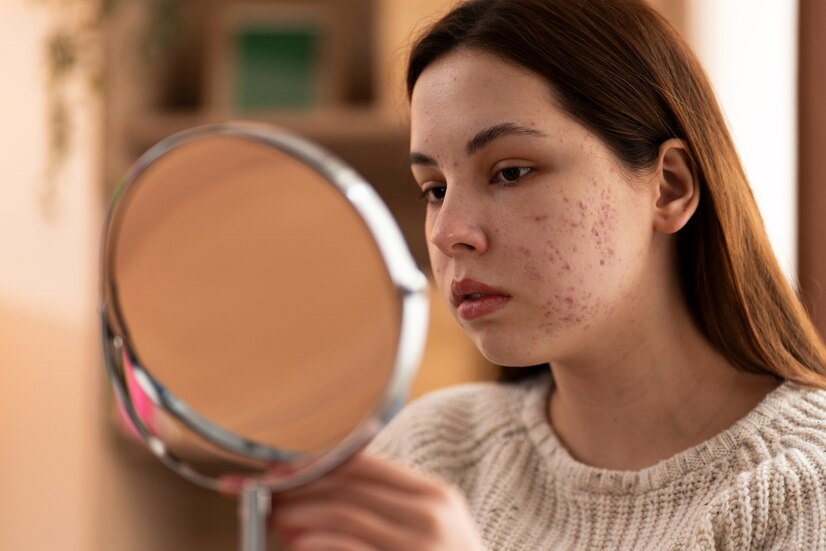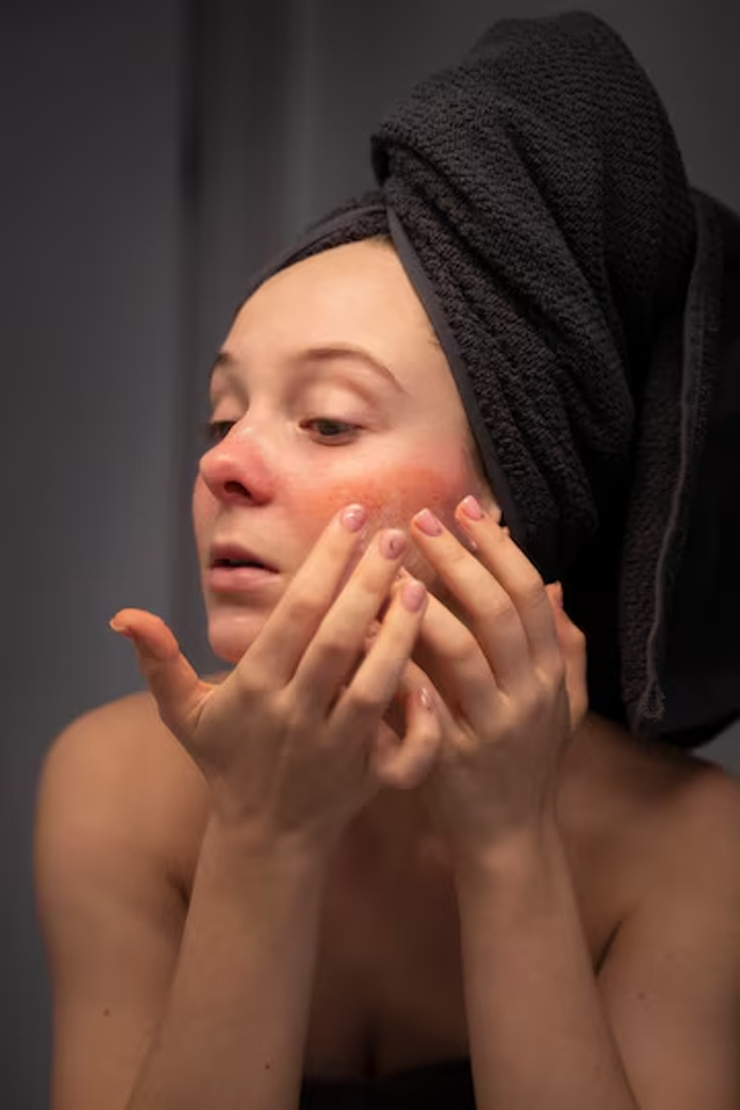
The menstrual cycle not only affects mood and energy levels but also has a significant impact on your skin. From breakouts to glowing days, the hormonal fluctuations throughout the cycle can lead to a variety of skin changes. Whether you're dealing with pre-period pimples or mid-cycle radiance, understanding how your skin behaves during different phases of your menstrual cycle can help you manage these changes more effectively.
Table of Content:-
To understand the changes that your skin goes through during a menstrual cycle, OnlyMyHealth team interacted with Dr Sukirti Jain Consultant Obstetrics and Gynaecology, Cloudnine Group of Hospitals, Vashi, Navi Mumbai.
Dr Jain explained, “Your menstrual cycle has a significant impact on your skin due to the fluctuations in hormones like oestrogen, progesterone, and testosterone. Each phase of the cycle brings different challenges, from breakouts and oiliness to dryness and increased sensitivity.” By understanding these changes, you can adjust your skincare routine accordingly to maintain healthier, more balanced skin throughout the month.
Menstrual Cycle Phases and Their Impact on Skin
The menstrual cycle typically lasts about 28 days and is divided into four phases: the menstrual phase, the follicular phase, ovulation, and the luteal phase. Each phase has a distinct hormonal profile that affects your skin in specific ways.
1. Menstrual Phase (Days 1–5)

This phase begins on the first day of your period and lasts about 3–7 days. “Hormone levels, particularly oestrogen and progesterone, are at their lowest, which can have several effects on your skin,” Jain said.
Skin Condition: Many women may notice that their skin appears dull, tired, or dry during this phase. Dr Jain notes, “Low oestrogen levels mean reduced collagen production and slower skin cell turnover, which can lead to a lacklustre complexion.”
Sensitivity: During menstruation, your skin may be more sensitive and prone to irritation. If you're prone to conditions like eczema or rosacea, they may flare up at this time.
Breakouts: The testosterone-to-oestrogen ratio may temporarily increase during menstruation, which can trigger oil production and lead to breakouts or worsen existing acne. Additionally, Dr Jain said that menstrual bleeding can cause dehydration, further contributing to skin dryness and irritation.
How to Care for Your Skin:
- Focus on hydrating and soothing your skin during this phase. Use moisturisers with hydrating ingredients like hyaluronic acid and ceramides to combat dryness.
- If you're experiencing breakouts, a gentle cleanser with salicylic acid or benzoyl peroxide can help clear pores without irritating your sensitive skin.
Also read: Ask The Expert: Can Too Much Travel Affect Your Menstrual Cycle?
2. Follicular Phase (Days 6–14)

After menstruation, the follicular phase begins. During this time, oestrogen levels gradually rise, peaking just before ovulation. According to Dr Jain, oestrogen has several beneficial effects on the skin, making this one of the best phases for your skin’s health.
Skin Condition: Oestrogen boosts collagen production, increases skin thickness, and enhances moisture retention, leading to more radiant, plump, and hydrated skin.
Improved Texture: Rising oestrogen levels promote faster skin cell turnover, leading to smoother and clearer skin. “You may notice fewer blemishes and a more even complexion during this phase,” said Dr Jain.
Balanced Oil Production: Unlike the luteal phase (which we’ll discuss later), oil production tends to be well-regulated during the follicular phase, meaning you're less likely to experience acne breakouts or excess oil.
How to Care for Your Skin:
- Moisturisers with humectants like glycerin can help maintain hydration and protect the skin barrier.
3. Ovulation (Around Day 14)

Ovulation occurs when the mature egg is released from the ovary, typically around the middle of your cycle. During this phase, oestrogen is at its peak, and testosterone levels also rise slightly, which can have mixed effects on your skin.
Increased Glow: The high oestrogen levels mean your skin may look its best during ovulation. It’s typically more hydrated, clear, and radiant, often described as a "glow." Explaining, Dr Jain said, “This is because oestrogen stimulates blood circulation, providing more nutrients and oxygen to your skin cells.”
Increased Oil Production: Testosterone levels also rise slightly during ovulation, which can stimulate sebaceous (oil) glands. “For some, this means a subtle increase in oil production, but for others, it could trigger clogged pores and acne breakouts,” Dr Jain noted.
How to Care for Your Skin:
- Continue using hydrating products, but monitor your skin for signs of increased oiliness. If your skin starts to feel oily, consider incorporating a lightweight, oil-free moisturiser.
- Use non-comedogenic makeup and skincare products to prevent clogging pores during this phase.
Also read: Period Skincare: Expert Lists Dos and Don’ts During Menstrual Cycle
4. Luteal Phase (Days 15–28)

The luteal phase occurs after ovulation and lasts until the start of your next period. Progesterone levels rise significantly during this phase, while oestrogen levels slowly decline. These hormonal shifts can lead to the most noticeable changes in your skin.
Breakouts and Oiliness: According to Dr Jain, “Progesterone stimulates the production of sebum (oil), which can lead to clogged pores, breakouts, and an overall oilier complexion. This is why many women experience premenstrual acne, often around the chin and jawline, during this phase.”
Puffiness and Inflammation: The body tends to retain more water due to progesterone, which can make your skin appear puffier and inflamed. “Hormonal fluctuations also contribute to an increase in acne-related inflammation, which can make existing blemishes more pronounced,” Dr Jain said.
How to Care for Your Skin:
- Opt for oil-controlling and anti-inflammatory products to combat breakouts. Salicylic acid, niacinamide, and tea tree oil are excellent ingredients to help reduce oil and inflammation.
- Make sure you’re maintaining a gentle skincare routine, as your skin can be more sensitive during this time. Avoid harsh exfoliants or overly drying treatments, which can aggravate breakouts and sensitivity.
Also watch this video
How we keep this article up to date:
We work with experts and keep a close eye on the latest in health and wellness. Whenever there is a new research or helpful information, we update our articles with accurate and useful advice.
Current Version